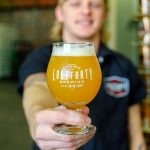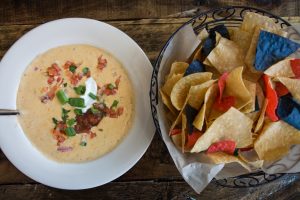Drink Insider covers the men and women behind Little Rock’s beverage scene. Whether it’s our brewers, bartenders or distillers, Central Arkansas has many talented people making the drinks you love. Today, we catch up with Zac Thompson, cellarman at Lost Forty Brewing.
The last time you were featured on Drink Insider you were a brewer at Diamond Bear, one of Arkansas’ original breweries. What have you been up to in the nearly three years since and how did you end up at Lost Forty?
I moved around locally, brewed at Vino’s a bit, then made a move to New England where I worked at Trillium Brewery for about eight months or so. To me, they’re one of the better breweries in the United States, and I was exposed to a lot of brewing techniques and technology. I learned a lot there. I’ve been here about two years now, with their [Lost Forty’s] expansion they went from 8,000 bbl to around 14 or 15,000 bbls a year and needed a “plug and play” guy.
What does a cellarman do at Lost Forty?
As soon as the wort comes off of the brew deck, I manage it through fermentation. I essentially just manage all of our fermentation space, working closely with our quality control manager Grant Chandler. It’s all things fermentation: dry-hopping, fruiting, filtering, carbonating, prepping tanks for the brewers, cleaning tanks … anything you can think of.
How do you feel like the craft beer scene is progressing in central Arkansas compared to other areas of the country you’ve been?
I think it’s really caught up honestly. Whenever I moved to New England, my eyes were opened. It was a different craft beer world up there, they were ahead of us. But now we’re getting caught up. I think people here are really starting to come around to different styles of beer. I think New England-style IPAs have hit Arkansas really hard, the haze craze has hit, and I think people are starting to come around to the wild beer production. People are starting to understand just sour and wild beer for what it is and how complicated that is to make and how exciting that can be. I think in the past little while Arkansas has really caught up. Not just beer geeks, but everyone loving craft beer. It’s a super exciting thing.
You mentioned wild beer. You’re one of only two places in Arkansas with a foeder.
Yes, Grant worked very hard building a yeast culture inside of that foeder, basically a specific build of his … a mixture of different yeast and bacteria that have a very distinct flavor, light and pleasant. We use it for everything. We do a solera method where we pull out and push wort right back in to referment. We use it for blending stock and inoculating for different barrels that are in our wild program… it’s very useful in a lot of different ways. We release Twig exclusively out of it, which will potentially be its own brand forever.
What can we expect from Lost Forty in 2019?
I really think we’ll push the IPA agenda really hard. People have really responded to every IPA we released this past year. I think our quality control is off the chain as far as certain things that have to do with IPAs. I think we’ll keep rotating in varieties of IPAs, that’ll be the driving force in 2019.
If you wanted to introduce a beer lover to your brewery in one mix-pack, what four Lost Forty beers would you like them to try?
I’d say Easy Tiger, an intro level style Mexican lager. Of course Rock Hound IPA comes second. That beer right now is our 2nd best seller and I think it’s so dialed in at this point. Every time i have it I’m surprised as to how much I like it and want to drink another one. Also, our Trash Panda IPA, that New England style that everybody is craving … It’s only gotten better, in my opinion, with our processes getting better. Lastly, I’ll go with Twig. It’s a fantastic table beer that we tried to keep true to style … very light, you can drink it all day. So it’s a super-exciting beer that’s sort of champagne-esque, very highly carbonated. It’s got really lemon zest flavor, peppery nose… really tasty. Just an excellent place to break into mixed-cultured beers.








